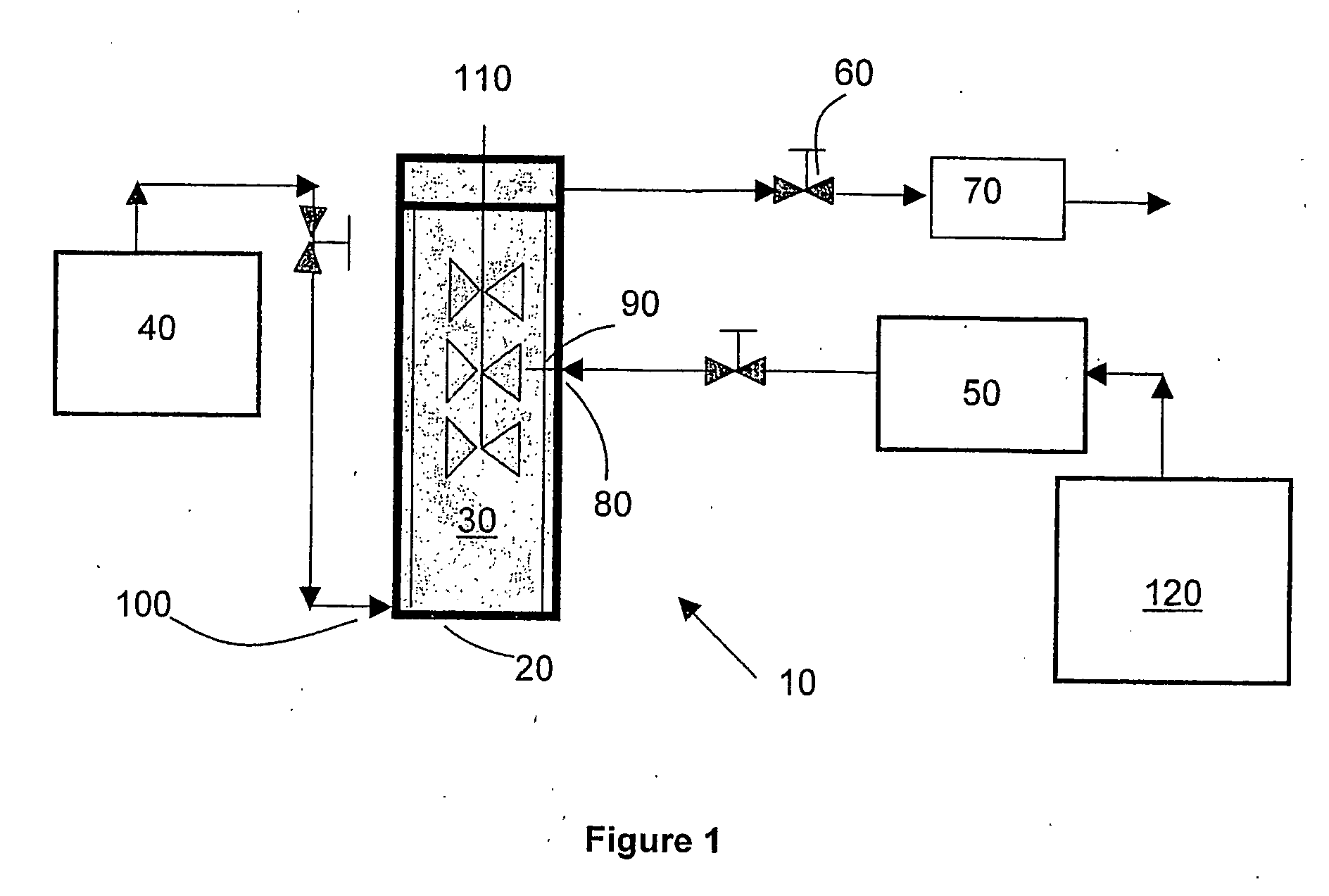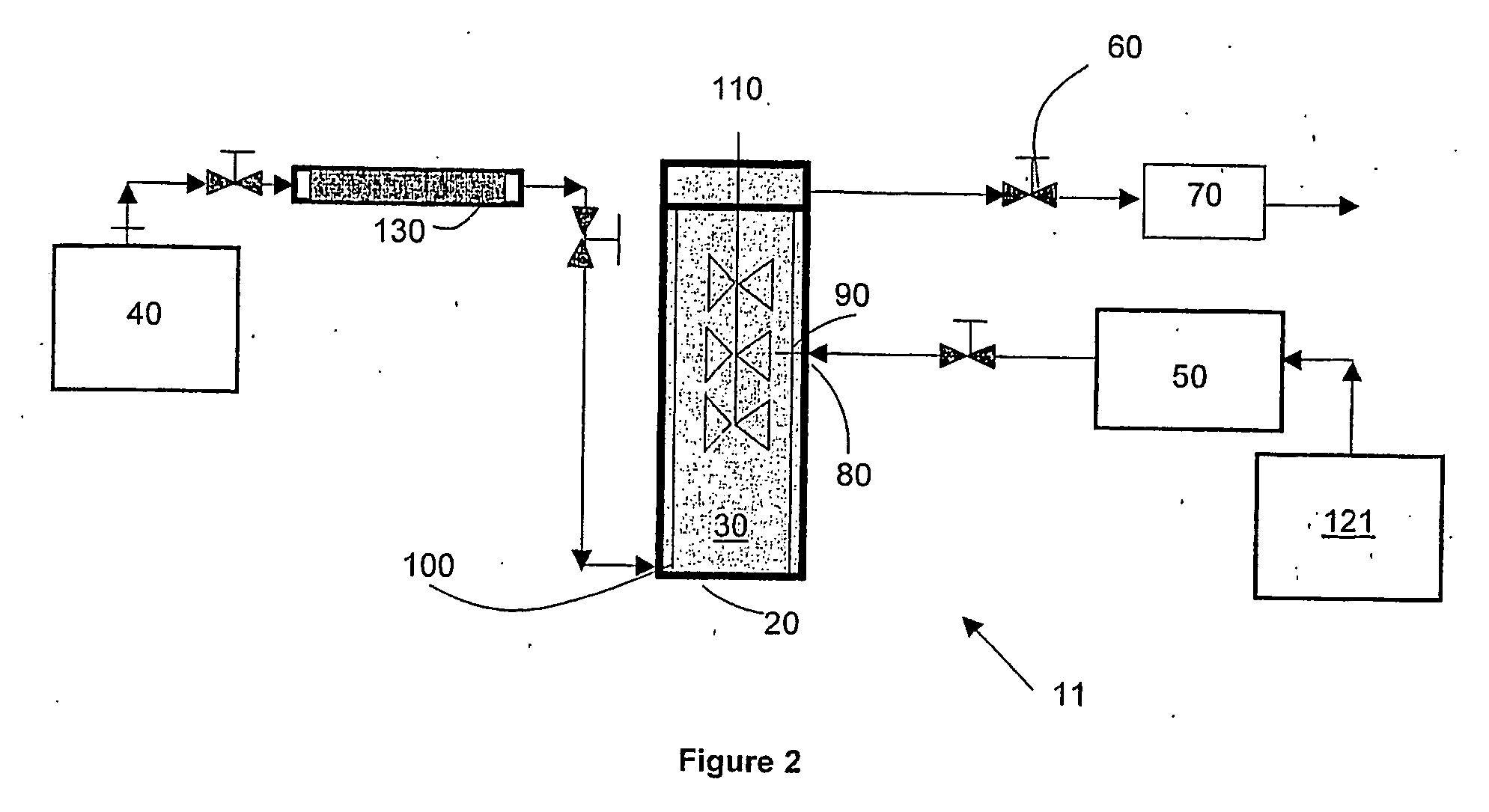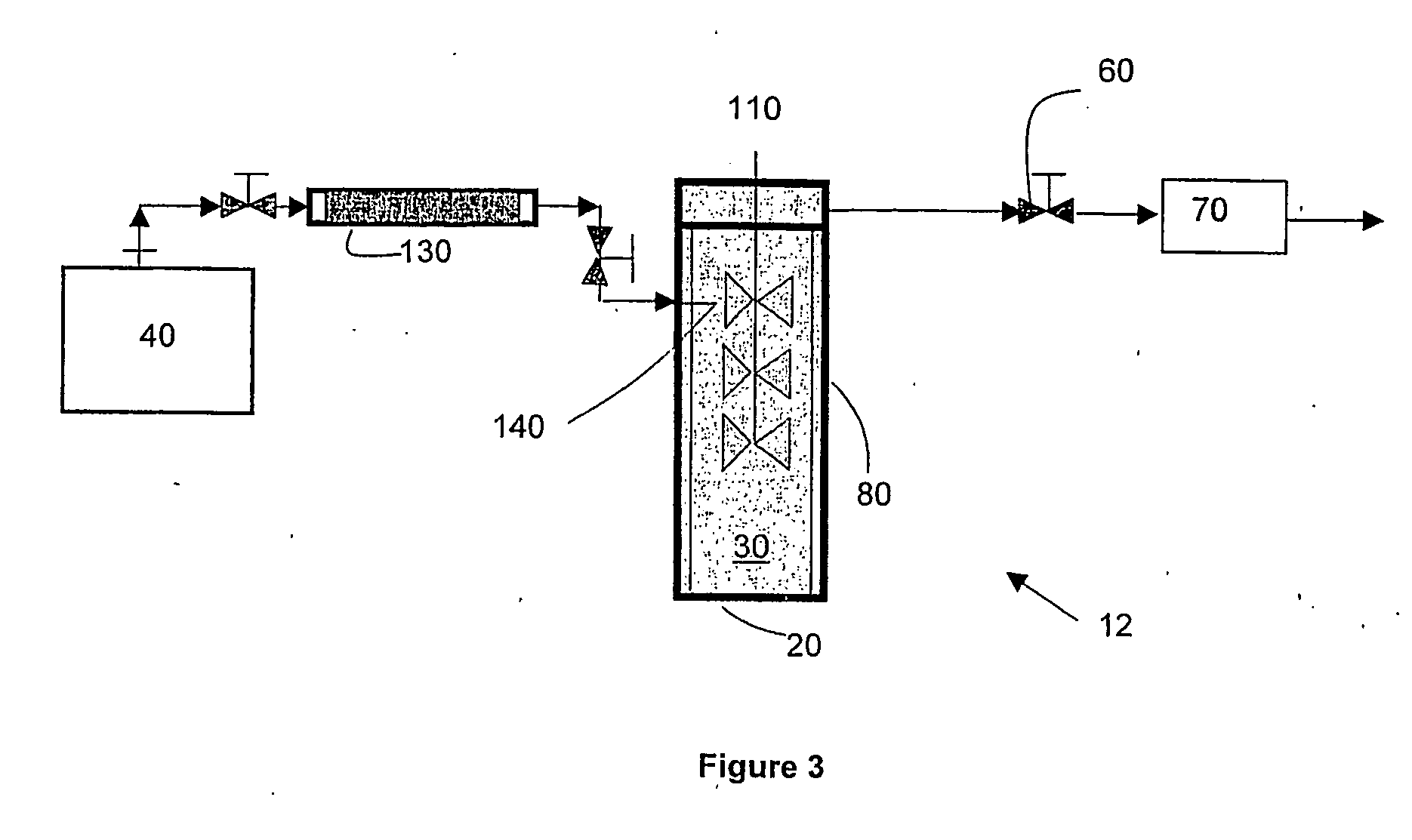Nanoparticles from supercritical fluid antisolvent process using particle growth and agglomeration retardants
a supercritical fluid and nanoparticle technology, applied in the direction of microcapsules, capsule delivery, chemical/physical processes, etc., can solve the problems of poor solvent for most pharmaceuticals and biopolymers, limited application of this process, and fine particles produced upon expansion of scf solution exhibit a high degree of agglomeration, and achieve superior properties
- Summary
- Abstract
- Description
- Claims
- Application Information
AI Technical Summary
Benefits of technology
Problems solved by technology
Method used
Image
Examples
example
[0055] Acetaminophen particles were precipitated using the apparatus for the laboratory-scale production of particles described in the first embodiment of the invention. Specifically, 3.0 g of acetaminophen (the solute to be precipitated) and 3.0 g of alpha D glucose penta acetate (the growth retardant compound) were dissolved in 60 g of acetone (the solvent) to form a clear solution. Supercritical carbon dioxide (“SC—CO2”) was used as the supercritical fluid. The flow rate of SC—CO2 was set at 75 g / min and the flow rate of the solution was set at 1.5 ml / min. A 150-micron nozzle was used to introduce the solution into the SC—CO2. The operating temperature was set to 40° C. and the operating pressure was set to 80 bar. As soon as the solution was introduced, mass transfer of acetone into the SC—CO2 occurred, which led to supersaturation and the formation of nuclei of acetaminophen in the presence of alpha D glucose penta acetate. The alpha D glucose penta acetate acted as a growth re...
PUM
| Property | Measurement | Unit |
|---|---|---|
| Particle size | aaaaa | aaaaa |
| Particle size | aaaaa | aaaaa |
| Pressure | aaaaa | aaaaa |
Abstract
Description
Claims
Application Information
 Login to View More
Login to View More - R&D
- Intellectual Property
- Life Sciences
- Materials
- Tech Scout
- Unparalleled Data Quality
- Higher Quality Content
- 60% Fewer Hallucinations
Browse by: Latest US Patents, China's latest patents, Technical Efficacy Thesaurus, Application Domain, Technology Topic, Popular Technical Reports.
© 2025 PatSnap. All rights reserved.Legal|Privacy policy|Modern Slavery Act Transparency Statement|Sitemap|About US| Contact US: help@patsnap.com



